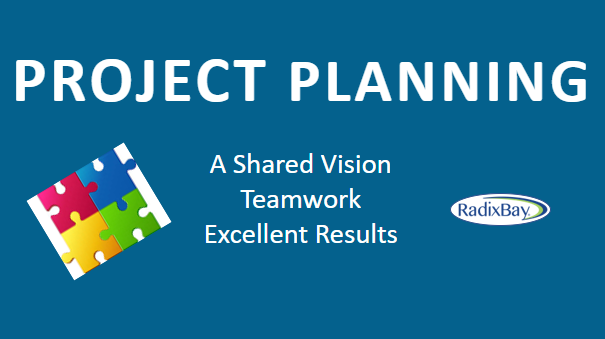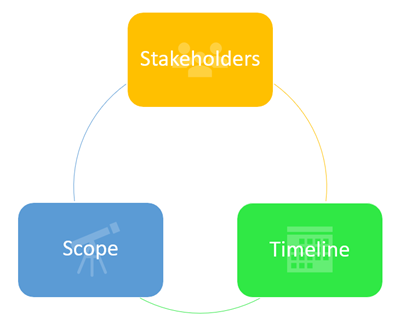
Introduction
The most essential stage of any project is the planning stage. This is where you establish the scope of the project, discuss its goals and determine the timeline that will lead to a successful implementation. During planning, ideas are at their freest and there are truly no wrong answers and all stakeholders of the project are given a voice to be heard and shape the end product.
Any project manager will tell you having that solid base of a thorough planning stage will always lead to the smoothest implementation of a project’s goals. It ensures everyone on the team is on the same page and those taking the physical actions to set in motion or create the end product of the project will have a clear, easy-to-understand blueprint for the work they need to do. It allows the engineers to be efficient with their time and effort and, in the long run, dictates the length of a project.
First Steps
Three things need to be done at the very start of the planning process of any project: identify the stakeholders, establish the goals and scope of the project, and determine a rough timeline that fits the size and bandwidth of your team. These three key components will influence all the work that will come along with the planning stage and establishing these first will provide your team with all the information they need to be successful planners.

It’s also important to establish the scope and goals of the project. Knowing how big the project is intended to be and ultimately what it needs to accomplish will influence the sort of requirements that will be gathered as well as the timeline that will be set for the project as a whole.
Once you know who is involved and the scale of the project, you can then create a timeline. This doesn’t need to be to-the-day specific, but it is important to determine the rough amount of time and budget it would take to create certain key deliverables and implement the project. Understanding the timeline and budget helps the project sponsor to secure the needed resources. Plus, deadlines will help to keep the team accountable and help them determine their work pace to hit those due dates.
Requirements
Using the established scope and goals of the project as well as the key stakeholders and additional parties being represented, you’re ready to start gathering requirements. First, speaking to the initiators of the project, gather every detail you can about what the project needs to accomplish. In these discussions, you’ll connect dots and bridge gaps with additional requirements that ensure the pieces of the puzzle fit together nicely.

User Stories
Once requirements are gathered, it is time to think about user stories. User stories allow the analyst to think and view a requirement through various points of view called personas. From that perspective, you envision what that persona wants and why they want it. User stories also include acceptance criteria which will be essential for the user acceptance testing (UAT) stage of the project because it allows the testers to know what makes these requirements and user stories successful in plain, clear language.

Visualization
At some stage in the planning process, you will almost certainly find there are processes or concepts within the project that are difficult to grasp when simply written down. You will find a need to visualize these concepts through some sort of chart, flow, or diagram. Luckily tools like Microsoft Visio, LucidCharts, or even something as simple as Paint enable users to turn their verbal ideas into images. This visualization can help make ideas more tangible for different people.

Conclusion
With all these different resources and deliverables in hand, your team is now ready for a successful and well-considered implementation. Spending the time and attention at the beginning of the project to give everyone a voice in what the end of this project will look like will ensure that you have the highest quality project possible in the most efficient amount of time. While planning does not guarantee there will be no speedbumps, it does allow the team to be ready to tackle those when they arise and ultimately keep the project on track for successful completion.

To learn more about our Salesforce services and how RadixBay can help your organization maximize its Salesforce investment, please visit our RadixBay Salesforce Services web page.
Are you ready to take that next step in your career? Please visit our job listing page to see our open Salesforce positions!
Tyler Shobe
Salesforce Certified Administrator
Salesforce Certified Platform App Builder
Account Engagement Specialist
RadixBay Salesforce Consultant